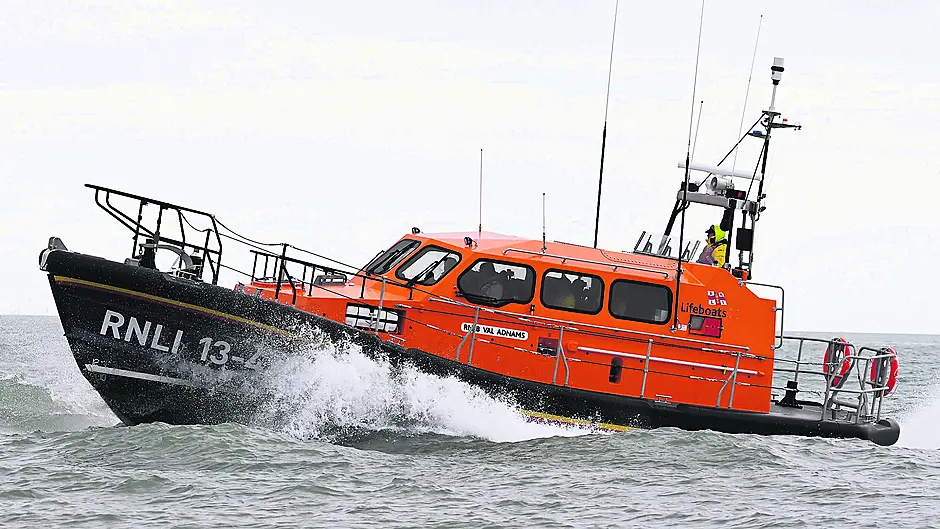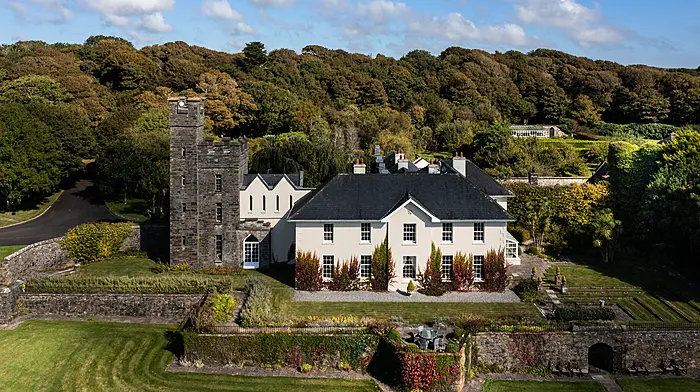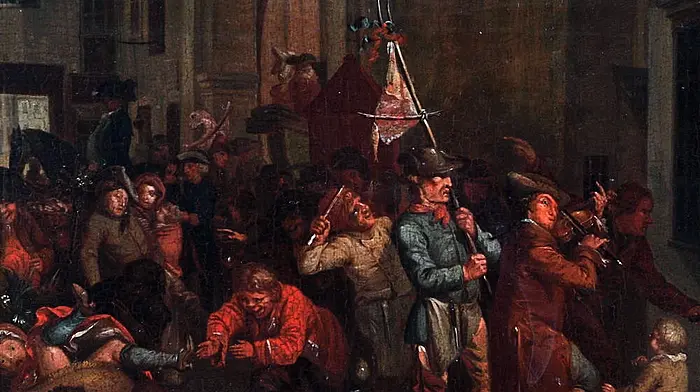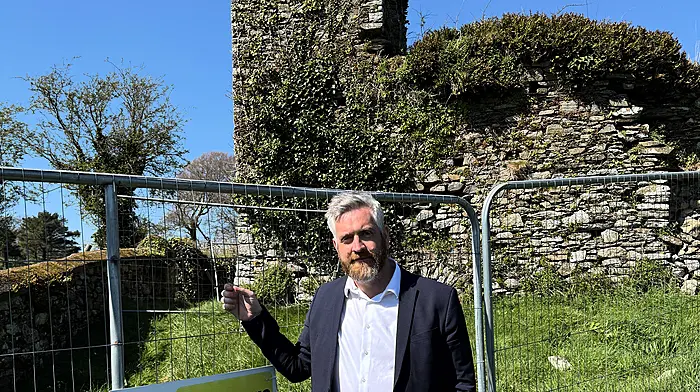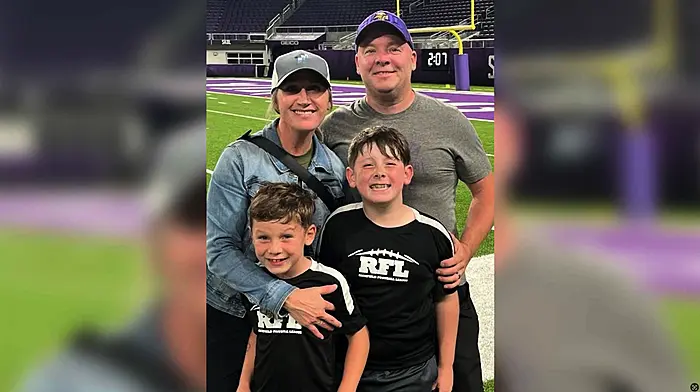The RNLI celebrates its bicentennial this week and members from West Cork will travel to London for the ceremony. These brave and selfless volunteers have saved countless lives around our coast
WEST Cork will be well represented at the launch of the RNLI’s 200th anniversary in the UK this week.
The theme of RNLI 200 is to ‘commemorate, celebrate, and inspire’ and reflects that while the charity commemorates those who have carried the torch and celebrates those who carry it today, it also looks to the next generation who will be there ‘to save every one’ for the next two centuries.
Anniversary celebrations will be launched on March 4th, with a service of thanksgiving at Westminster Abbey which will be attended by volunteers from the region.
Representing Courtmacsherry RNLI will be station mechanic Stuart Russell, voluntary coxswain/mechanic Tadgh McCarthy and water safety and education volunteers Henk and Angela Veldman O’Donovan.
Flying the flag for Union Hall RNLI will be John Kelleher, lifeboat operations manager and Pamela Deasy, press officer.
What was to become the RNLI was founded by a retired Isle of Man solicitor Sir William Hillary at a meeting in a public house in London in 1824. He had witnessed many tragedies around the coast and realised something needed to be done, and so one of the oldest charities was established. To this day the RNLI relies on charitable donations to fund its work and support thousands of volunteers in their life saving work in the waters of Ireland, and the UK.
There are currently 46 operational lifeboat stations in Ireland. In all there are 60 RNLI lifeboats operational at these stations, with 25 being large all-weather lifeboats and 30 being inshore lifeboats. Some stations have both. There are six RNLI stations in West Cork located at Crosshaven, Kinsale, Courtmacsherry, Baltimore, Union Hall, and Castletownbere.
The Courtmacsherry RNLI Lifeboat Station along with the station in Arklow were the first to be set up in Ireland in 1825, and will celebrate their own 200th anniversary celebrations next year.
Courtmacsherry has been involved in many historic rescues off our coast including when in 1915, the Cunard Liner ‘Lusitania’ was hit by a torpedo 12 miles off the Seven Heads and Old Head of Kinsale and sank in 18 minutes with the loss of 1,198 lives. The Courtmacsherry lifeboat ‘Kezia Gwilt’ under voluntary coxswain Timothy Keohane, then stationed in Barrys Point, assisted in the rescue and recovery of bodies after rowing from its station to the site in windless conditions without the benefit of sail or engine. If its current boat, the ‘Val Adnams’ received last summer, was there in 1915, the lifeboat would have been there in 20 minutes. It’s the most modern lifeboat in the RNLI fleet.
 Courtmacsherry RNLI volunteer crew returning from a rescue including coxswain Mark Gannon, mechanic Dave Philips, and crew members Ken Cashman, Tadgh McCarthy, Denis Murphy and Donal Young.
Courtmacsherry RNLI volunteer crew returning from a rescue including coxswain Mark Gannon, mechanic Dave Philips, and crew members Ken Cashman, Tadgh McCarthy, Denis Murphy and Donal Young.
Meanwhile, in 1979 the Courtmacsherry Lifeboat was an integral part of the rescue operations in the Fastnet Race tragedy when violent storms hit the famous race in early August with the loss of 15 people. It rescued the yacht ‘Case Tete 5’ in the worst conditions possible and landed its 10 crew safely in Courtmacsherry after being at sea for over 22 hours. Mechanic on that night was a young volunteer Mark Gannon who is the current voluntary coxswain. Mark is 46 years on the crew and Mark’s son Mark John is another voluntary coxswain while his brother Dara is also a current crewman. Mark’s wife Patricia was also a previous crew member. The family traditions run strong at most lifeboat stations.
Vincent O’Donovan, station launch authority and press officer, recalled another stand-out rescue: ‘In 1991, one of the most unusual rescues was undertaken as the yacht ‘Karma of the East’ was rescued early on the morning of July 23rd after they had a fire on board. Later that evening while at the safe surround of Courtmacsherry Pier, a cargo of over €9.5m of drugs was discovered on board.’
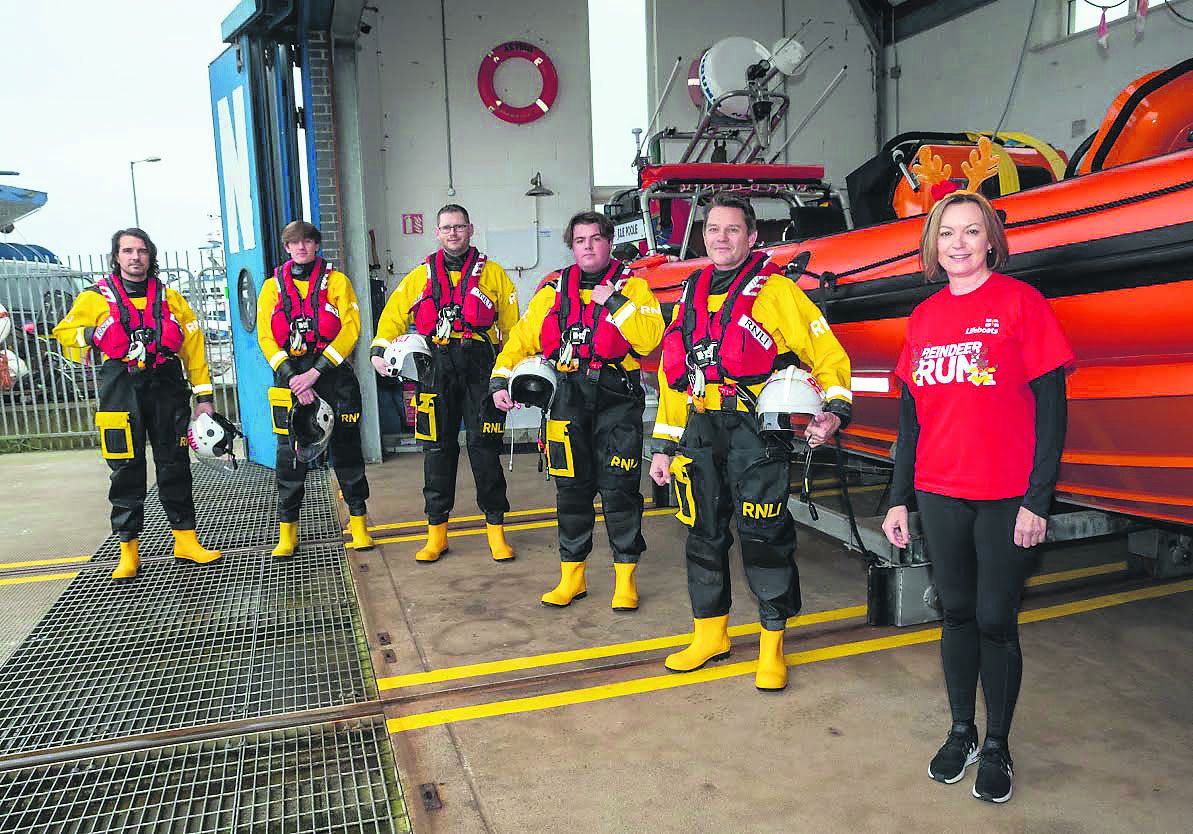 Some of the Kinsale RNLI crew at a fundraiser: Mark Cotter, Thomas Grennan, John Walley, Finn Bowen, Jon Green and Ernestine Kingston.
Some of the Kinsale RNLI crew at a fundraiser: Mark Cotter, Thomas Grennan, John Walley, Finn Bowen, Jon Green and Ernestine Kingston.
Courtmacsherry RNLI has 30 voluntary crew members with five new recruits joining in the past year. In the past 24 months to Feb 2024, it launched 37 times to a variety of incidents.
‘The crew exercise every week in the waters off Courtmacsherry and are all equipped with a personal bleepers which they have with them 24 hours a day,’ said Vincent. ‘In the past 12 months our lifeboat crew have exercised off our coast over 90 times in preparation for any type of incident that might occur. A callout usually is activated by the Coastguard’s Marine Rescue Centre in Valentia and once the bleepers go off, the crew drop everything and rush to the stationhouse. The first six that arrive including an on-duty coxswain and mechanic, will put on the gear and within nine minutes from the bleeper being activated, the lifeboat will be away from its moorings and heading towards the casualty. All crew are on call 365 days a year and 24 hours a day. It’s a labour of love,’ he said.

Meanwhile, Union Hall RNLI was founded in 2012, as a result of a huge community effort. Locals campaigned, raised funds and staffed the new station following the loss of five men in the ‘Tit Bonhomme’ tragedy at the mouth of the harbour in 2012.
‘After the Tit Bonhomme, I wrote a letter to RNLI that April, about the gap in the coastline, and if we had a boat, that maybe outcome might have been different,’ explained press officer Pamela Deasy.
They were operational by September 2014 and currently have around 60 volunteers between crew, shore crew, operations and management.
West Cork's six lifeboat stations
Crosshaven
Established in 2000 the station, situated on the Owenabue river, operates an inshore B Class Atlantic 75
Kinsale
One of the newest stations in the region when opened in September 2003. Situated 8km northeast of the Old Head, the Kinsale station is home to ‘Miss Sally Anne (Baggy) II’ an inshore B Class Atlantic 75
Courtmacsherry
One of the oldest lifeboat stations in Ireland and the entire RNLI. Established in 1825, the station crew rowed 15 nautical miles to assist following the Mayday call from the Lusitania (1915). Crews at the station have received 14 awards for gallantry. The coveted bronze medal was awarded 26 years ago in 1998 to coxswain Dan O’Dwyer and his crew for the heroic rescue of three people from the yacht ‘Supertaff’ in a raging force 10 storm 22 miles off the coast of Seven Heads in West Cork.
Baltimore
A lifeboat station has been established at Baltimore for over 85 years. Over the years the crews have been presented with 15 awards for gallantry.
Union Hall
Another relatively new station, in operation since 2014 and situated in Glandore Harbour. The local community campaigned, raised funds and staffed the new station following the loss of five men in the ‘Tit Bonhomme’ tragedy at the mouth of the harbour in 2012.
Castletownbere
Operating since 1997, the all-weather lifeboat and volunteer crew provide essential search and rescue coverage for Ireland’s southwest coast. Some stations have a full-time crew member but 99% of the crew are volunteers. These comprise boat crew who go to sea; shore crew who support the launch and recovery of the boat and who communicate the Irish Coast Guard and the lifeboat crew during operations; a fundraising team who work tirelessly in providing resources for the charity’s lifesaving work and an education team who promote water safety and best practices for the general public while on the water for recreational or professional reasons. Each station is run by a volunteer lifeboat operations manager.

